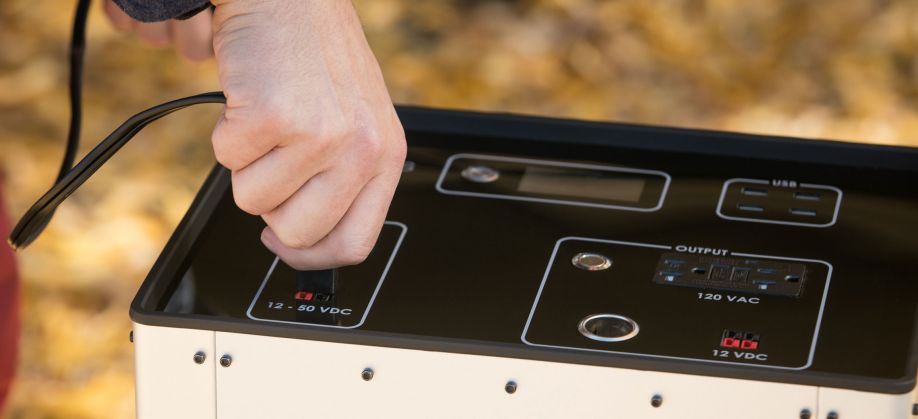Lithium LiFe stands for lithium iron phosphate, and its the newest revolution in rechargeable home battery systems. While standard lithium-ion batteries are a big step up from lead-acid batteries, LiFe takes it even further.
Lead Acid Vs. Lithium Ion Batteries
Contributed by | Humless
Reprinted with permission from the Humless blog:
The discovery of lithium and its later adaptation into better, safer, more efficient batteries was a huge step forward for just about everyone interested in off-the-grid living.

At first glance, it would seem that lithium-ion batteries are the pinnacle of rechargeable battery tech with little room for improvement, and that soon lead-based batteries would be on their way out.
But is that really the case? And which is the best battery for solar?
7 Quick Comparisons Between Lead Acid and Lithium Ion Batteries for Solar
Out of all non-radioactive metals, lead is the heaviest. For decades, lead has been the go-to material for batteries, so where does that leave lithium (the world’s lightest metal)? And with several types of lithium batteries available (like the lithium deep cycle battery), how do you choose the right one?
Let’s take a look at seven quick figures comparing lead- and lithium-based batteries, and what that means for your quest for energy independence and finding the best batteries for solar.
- Weight: Like we said, lead is pretty heavy. That means lead-based batteries are typically more than three times the weight of their lithium counterparts.
- Efficiency: When compared to modern alternatives, lead acid batteries are highly inefficient for both charge and discharge, meaning you’ll see a loss in amps while charging and a fast voltage drop during discharge that decreases the total capacity of your battery. Lithium ion batteries nearly solve the efficiency issue (more on that later).
- Discharge: When using a lead-based battery, you’ll notice it never discharges more than 80%. In fact, most manufacturers recommend a discharge depth of no greater than 50%, while the lithium ion solar battery achieve almost a 100% discharge.
- Cycle Life: When it comes to batteries you’d typically find in a home or mobile solar setup, most lead batteries achieve just 300 or so lifetime cycles, while lithium batteries can hit 700 to 800. On top of that, cycle life in lead acid batteries is highly dependent on the level of discharge we mentioned above, while standard lithium ion batteries are only slightly affected by discharge level.
- Voltage: You’ll see nearly constant voltage levels through the whole discharge cycle of a lithium ion battery, while lead batteries experience a constant drop of voltage. Maintaining voltage translates to better efficiency.
- Cost: Lead-based batteries are the cheapest to produce, but the real cost of owning a lithium battery is far lower when you factor in performance and the battery’s better longevity.
- Environmental Impact: Solar lithium batteries are the superior option in terms of environmental impact.
Although you’ll find lead and lithium ion batteries in home and mobile solar setups across the country, there’s now an even better option as the best lithium ion battery for solar.
Introducing Lithium LiFe Batteries by Humless
The newest generation of safe, efficient batteries is here. Lithium LiFe stands for lithium iron phosphate, and it’s the newest revolution in rechargeable home battery systems.
While standard lithium-ion batteries are a big step up from lead-acid batteries, LiFe takes it even further. With Humless Lithium LiFe batteries, here’s what you can expect:
- Incredible Life Cycle: Batteries powered by LiFe can achieve more than 2500 full charge cycles before they need to be replaced, which blows lead-acid and lithium-ion batteries out of the water.
- Superior Efficiency: LiFe batteries are the most efficient in terms of maintaining constant amps while charging and steady voltage when discharging. LiFe batteries are immune to “charge memory,” meaning they always recharge to their full capacity no matter how much or how little they were used between cycles.
- Cost: Per cycle, LiFe batteries destroy other battery systems in terms of cost. Despite their bigger up front cost, LiFe batteries last far longer, getting you more bang for your buck long after other batteries have quit working.
- Safety: Unlike lead batteries and standard lithium batteries—which can leak gas or catch fire—LiFe batteries have a fantastic safety record.
- Ease of Use: Humless’ batteries are incredibly easy to install, and our home systems can be set up by any electrician. Our mobile units are even easier to use.
While the advent of lithium-ion technology represented an evolution in rechargeable batteries, Lithium LiFe is an energy revolution.
Combined with highly efficient solar panels, LiFe batteries are your ticket to true off-grid freedom.
The content & opinions in this article are the author’s and do not necessarily represent the views of AltEnergyMag
Comments (0)
This post does not have any comments. Be the first to leave a comment below.
Featured Product

